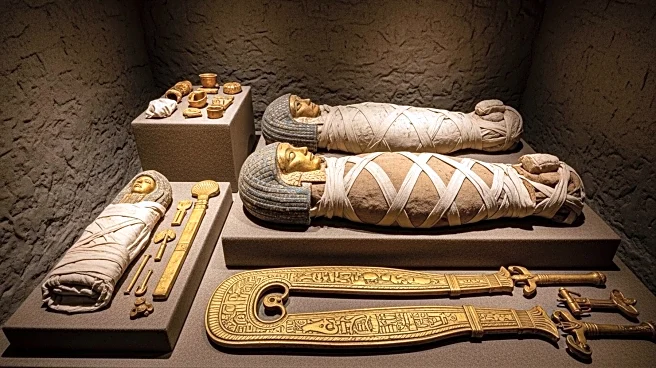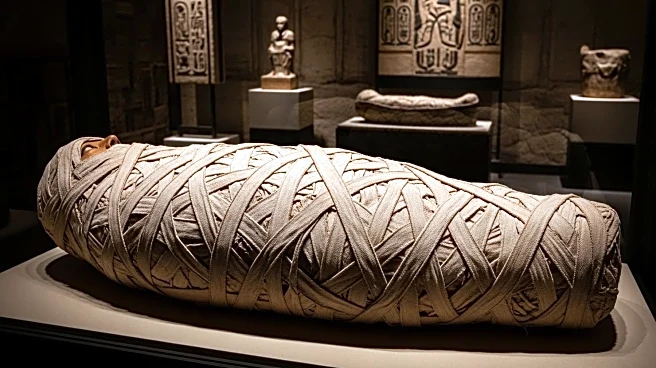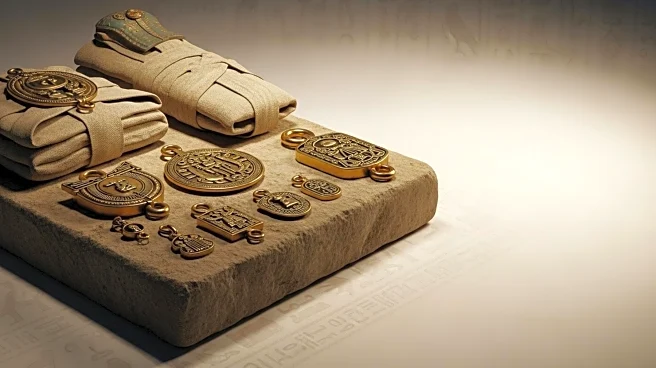What's Happening?
A team of Turkish archeologists has uncovered over 100 stone artifacts along the Anatolian coast, suggesting the existence of a prehistoric land bridge between Asia and Europe. This discovery indicates that early humans may have migrated across this now-submerged land bridge, offering a new perspective on human migration during the Paleolithic Period. The artifacts, including hand axes and cleavers, were found in Ayvalık, a region previously unexplored in Pleistocene archaeology. The findings challenge the traditional narrative that Homo sapiens primarily reached Europe via the Levant and Balkans.
Why It's Important?
This discovery has the potential to reshape our understanding of early human migration patterns. By revealing a previously undocumented route, it provides insights into the technological traditions shared across Africa, Asia, and Europe. The presence of these artifacts in Ayvalık suggests that the region played a significant role in human dispersal during the Paleolithic Period. This could lead to further research and exploration of submerged landscapes, enhancing our knowledge of human history and evolution.
What's Next?
Further investigations, including artifact dating and stratigraphic excavations, are necessary to confirm the existence of the land bridge and its role in human migration. Researchers may also explore the bottom of the Aegean Sea for additional artifacts. These efforts will contribute to a more comprehensive understanding of early human dispersals and the environmental conditions of the time.












